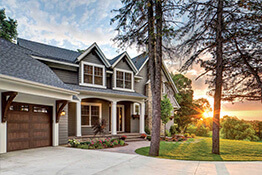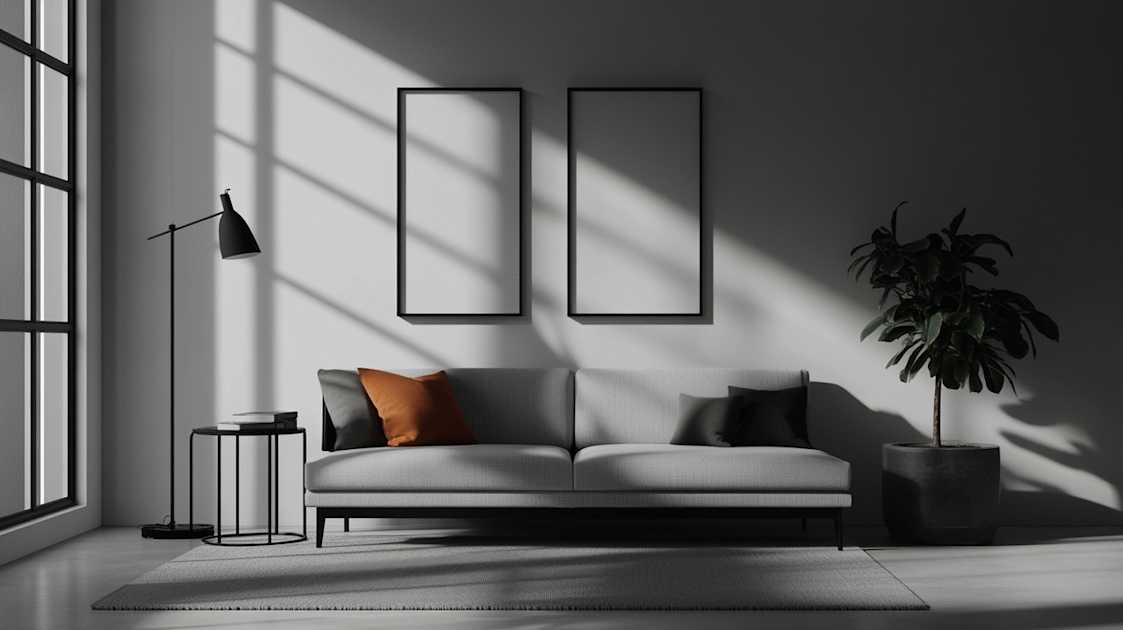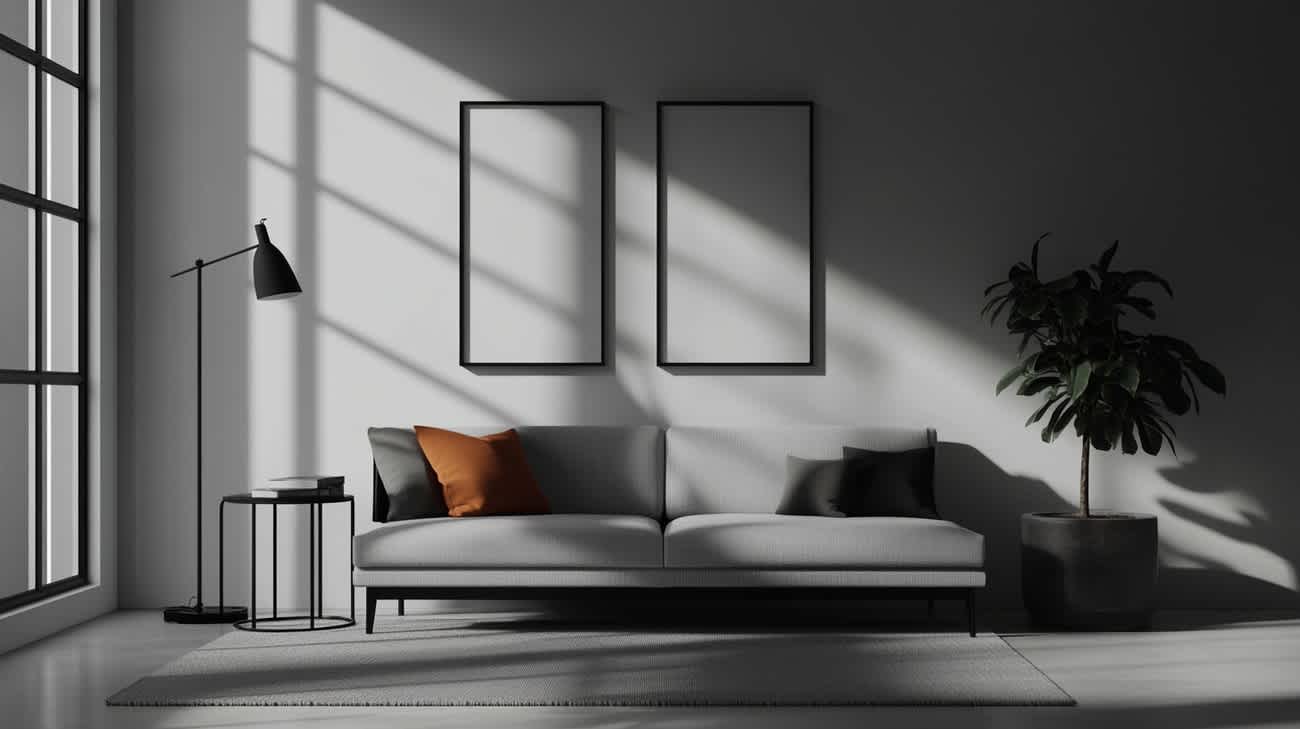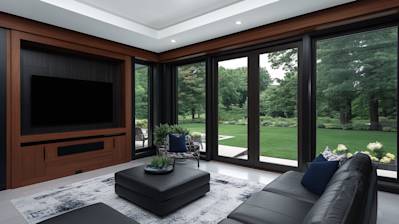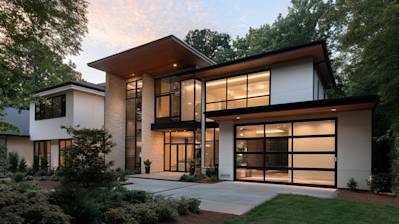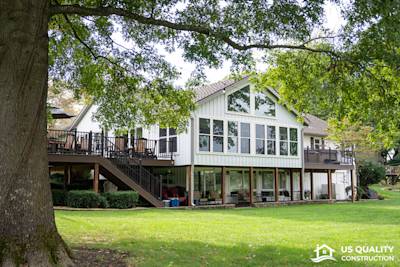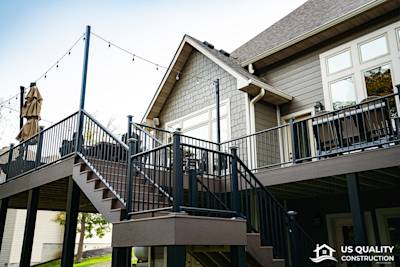Designing or renovating houses requires knowledge of different elements, one of these being the average window size. Windows are essential household components that contribute significantly to the overall aesthetics and functionality of your home. Let’s take a detailed look at the average window size, its importance, and factors to consider when choosing the best size for your needs.
Average Window Size: An Overview
The standard or average window size for most homes usually falls within certain dimensions. Despite the variations in window types and styles, understanding the average size helps homeowners make an informed decision.
- A majority of standard sliding windows, most common in living rooms or dining rooms, measure approximately 36-72 inches wide and 48-60 inches high.
- Single-hung or double-hung windows, commonly found in bedrooms and kitchens, measure about 24-48 inches wide and 36-72 inches high.
- Picture windows, which are stationary, usually measure 24-96 inches wide and 14-96 inches high.
The Importance of Average Window Size
Understanding the average window size is vital for several reasons. It aids in the following:
- Effective Space Optimization: Knowing the average window size helps optimize space utilization. It helps maintain balance without sacrificing the aesthetic appeal of your home. Tallying your window size with the average ensures you're not taking up too much or too little space.
- Enhanced Energy Efficiency: Adequate window size can contribute to improved energy efficiency. Properly sized windows contribute to healthy indoor air circulation, reducing reliance on artificial air conditioning.
- Accurate Planning and Budgeting: Knowledge of the average window size assists in precise cost estimation for window installation or replacement.
Factors Influencing the Choice of Window Size
Locality Building Codes
Another pivotal item to remember when considering the size of the windows is the building codes present in your locale. These regulations stipulate maximum and minimum sizes for emergency egress or rescue windows.
Architectural Style
The aesthetic, architectural style and structure of your home influence the preferred size of windows. For instance, modern minimalist homes often incorporate larger window sizes for a sleek, open view. Conversely, traditional style homes may use smaller, multiple windows.
Room Functionality
The function of the room also determines your chosen window size. Bedrooms require a larger access window for emergency escapes, while bathrooms might need smaller windows to maintain privacy.
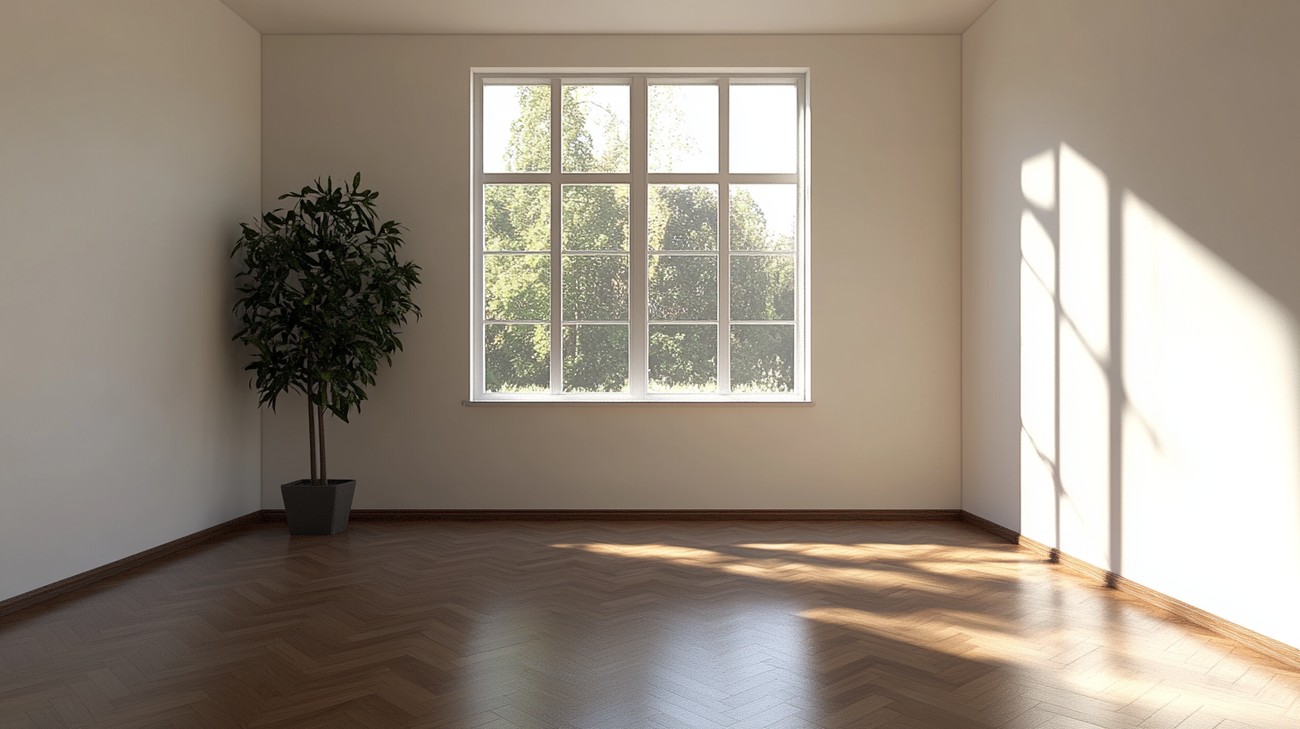
Frequently Asked Questions about Average Window Size
What is the average size for double-hung windows?
Double-hung windows, a popular choice among homeowners, typically have an average width ranging from 24 to 48 inches and a height ranging from 36 to 72 inches. However, in some cases, these dimensions can be larger or smaller depending upon the architectural design of the home or the personal preferences of the homeowner.
What is the average size of casement windows?
Casement windows are another popular window type. They generally have an average size in the range of 1.5 to 2.5 feet in width, and 5 to 6 feet in height. Of course, these sizes can vary greatly depending on the design and overall architectural scheme of the structure where they'll be installed.
Does the average window size change with window styles?
Yes, there's a variance in average window size depending upon the style of window. For instance, bay windows are much larger, often taking up more space than a standard window. Skylights are typically small, designed to provide natural light rather than a view. Sliding or gliding windows can range widely in size; some are small and horizontally shaped, while others are tall and vertical.
How does the average window size affect the amount of natural light in a room?
The window size can significantly impact the amount of natural light that enters a room. Larger windows allow more sunlight to enter, brightening up spaces and increasing the feeling of spaciousness. Smaller windows, naturally, allow in less light. The average window size is often a fair compromise between the two, providing enough light without overwhelming the room.
Do different regions have different average window sizes?
Indeed, different regions can have distinct average window sizes, largely due to the varying climates and architectural styles. In places with colder climates, windows are typically smaller to conserve heat. Conversely, in warmer climates, larger windows are often preferred to permit greater airflow.
Can the average window size change over time?
Yes, the average window size can definitely change throughout time. As architectural styles and homeowner preferences evolve, so does the average window size. Additionally, advancements in window technology and materials have made it possible to create larger, more energy-efficient windows, potentially skewing the average window size upwards.
Does the average window size affect the cost of window treatments?
The cost of window treatments is indeed influenced by the size of the windows. Larger windows would require more material for curtains or blinds, which could increase the cost. Equally, customized window sizes might require custom window treatments, which could also be more expensive than standard sizes.
Is there an average window size for commercial buildings?
For commercial buildings, the average window size varies greatly depending on the use of the building, its design, and the preferences of the building owner. Large curtain wall systems may be used on high-rise buildings, whereas storefront systems may be used for small to medium-sized commercial buildings.

Pros of Average Window Size
Energy Efficiency
When considering the average window size, it's important to mention that smaller windows can contribute to better energy efficiency. Their limited surface area reduces the amount of heat loss in colder months or excessive heat gain in summer. This translates to less energy use for heating or cooling your home, attributing to reduced utilities bills and a lower carbon footprint.
Cost
One of the significant advantages of average-sized windows is that they are typically cheaper than larger, custom-sized windows. The production process for standard, average window sizes is generally streamlined, which can considerably decrease costs. This affordability means you could potentially replace or install more windows with a set budget than if you chose larger or custom-sized ones.
Readily Available
Average-sized windows are much more readily available than custom-sized ones. This is because most companies manufacture windows in standard sizes. Therefore, if immediate installation is a requirement, average-sized windows are a great choice due to their accessibility.
Versatility
With average-sized windows, you have the advantage of versatility. They are compatible with most home designs and are not limiting in terms of style or decoration. They can fit well with either modern or traditional architecture, providing a timeless appearance.
Easier Installation
Installation of average window sizes is pretty straight forward and doesn't require specialized skills or tools. The installation process is quicker which ultimately reduces the cost associated with hiring professional installers.
Cons of Average Window Size
Limited Natural Light
One of the main disadvantages of average-sized windows is that they can limit the amount of natural light entering your home. This might not be a problem for some, but for rooms where you want to maximize daylight, smaller windows might not be the best fit.
Limited Views
If your home offers scenic outdoor views, average-sized windows may not provide the expansive viewing portals larger windows would. For rooms overlooking beautiful landscapes, having larger windows adds value and enhances your enjoyment of the view.
Customization Limitations
There are some customization limitations with average-sized windows since they are mass-produced. If your decor or architectural style requires unique sizes or shapes, average sized windows could restrict the artistic vision that you might possess for your living space.
Ventilation
Smaller, average-sized windows might not offer the best ventilation compared to larger windows. This could be a major con if the window is the primary source of fresh air in a room. In such circumstances, you might find that air circulation and the overall freshness of the room are limited.
Decreased Property Value
In some cases, choosing average-sized windows over larger windows might impact the value of your property. Houses with larger, more prominent windows tend to be more desired because they offer expansive views and better natural light. This could potentially make a difference if you plan to sell your house in the future.
Less Dramatic Impact
While average-sized windows are versatile and fit in most architectural styles, they don't create the same dramatic visual impact that larger windows can provide. For homeowners valuing esthetics and design impact, larger windows may be a more attractive option.

Myths and Misconceptions About the Average Window Size
The world of architecture, and by extension windows, can be quite fascinating. However, it’s also a domain that's shrouded in several misconceptions and myths, especially surrounding the "average window size". Not only do such misconceptions lead to flawed design choices but they also reveal a lack of understanding of the fundamental principles of architecture and design. In this section, we'll discuss and debunk several of these myths and misconceptions.
Myth 1: There is One Universal Average Window Size
The Standard Measurement Misconception
Many people believe that there is a universal average window size that applies to all homes. This is a misconception. The size of a window can vary vastly depending on various factors - the type and style of the house, the purpose of the room where the window is installed, personal design preferences, and even geographic location. For instance, traditional Victorian homes typically have tall, narrow windows, while modern homes often favor large, expansive window designs.
The Functionality Misunderstanding
The size of a window directly affects its functionality. Bigger windows allow more light and offer better views, but can also pose privacy challenges and increased energy costs if not appropriately designed. Hence, the "average" window size must also take into consideration the balance between aesthetics, function, and efficiency.
Myth 2: Bigger Windows Mean Better Homes
The Bigger is Better Fallacy
A common notion among many is that bigger windows mean a more luxurious home. This is simply not true. While large windows can indeed offer more breathtaking views and natural lighting, they might not always be practical or even possible. Very large windows can create problems with structural stability, thermal comfort, glare, and privacy.
Oversizing Windows
Moreover, oversizing windows can lead to several issues. It makes the house vulnerable to break-ins and can cause heat loss during winters, leading to higher energy bills. Hence, the size of a window should be determined by the house's architectural requirements, not by the myth that bigger is always better.
Myth 3:
Myth 3: Windows are Just for Looking Out
The Light and Views Stereotype
Windows serve a lot more purposes than just providing views and letting in light. They play a crucial role in the circulation of fresh air, can be a prime factor in the home's energy efficiency, and significantly contribute to the aesthetic appeal. Reducing them to the 'light and view' function is grossly oversimplifying their role and disregards the critical influence they have on a home's livability and design.
Myth 4: Window Size Does Not Affect Energy Efficiency
The Disregard for Energy Efficiency
It is often believed that the window size does not have an impact on energy efficiency. This couldn't be farther from the truth. Windows, particularly their sizes, significantly inform how your home retains or loses heat. For instance, larger windows, if not well-insulated, can let in more cold air during the winter and hot air during the summer, making your HVAC system work harder and increasing your energy bills.
The medium, through which we've debunked these myths surrounding the average window size, shows that the window size design is not arbitrary. It must consider a range of factors, including the house's architectural style, energy efficiency, and the individual room's functionality. Unlike what these misconceptions suggest, there is no one-size-fits-all approach when it comes to window sizing.
Summary
So, when we talk about the term "average window size", we're referring to the dimensions or measurements that most windows in a house or building typically have. This size can vary depending on the type of building, its design, and the purpose of the window. On average, though, most common windows sizes range somewhere between 24 to 48 inches wide and 36 to 72 inches tall. It's always wise to consider these averages when planning out any construction or home improvement project.
Now, keep in mind that the "average window size" is not a strict rule. It's more of a generalized range that is helpful to be aware of, especially when you're in the midst of making design or renovation plans. Just because it's an average, though, doesn't mean it's always the best choice for every space. You need to look at each room individually and figure out what size windows not only fit but also complement and serve the room's functionality.
Finally, getting to grips with the "average window size" can simplify your planning process. It can guide you in estimating costs, comparing design possibilities, and even in understanding how different window sizes can impact both the aesthetics and practicalities of a space. So, knowing the average provides a useful starting point to narrow down your options when choosing the right window size for any given project.
About US Quality Construction
Meet US Quality Construction, Kansas City, MO's premier construction company! Born and realized right here in the heart of the Midwest, we've been mastering our craft since our inception. We bring together seasoned professionals, the finest materials, and an unwavering dedication to quality, catering to a variety of construction needs across both residential and commercial spaces. Our proven track record of delivering exquisite projects on time reflects our commitment and love for our city. Whether it's a simple home renovation or a large-scale commercial build-up, US Quality Construction is the trusted choice, ensure your dreams are translated into reality. It's built right here, with quality reigning supreme.
Tags: window size, average, measurement,
